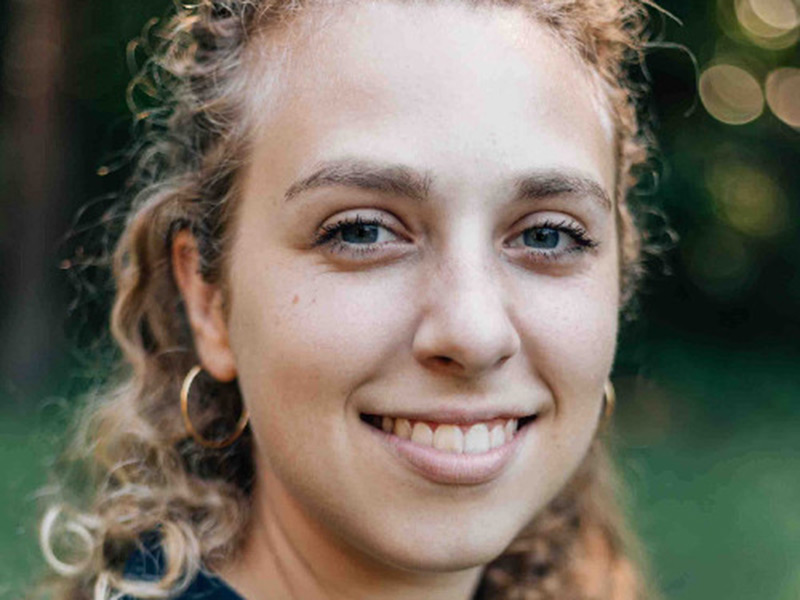School of Industrial and Systems Engineering master’s student Samantha Morton was skeptical as she looked down the length of Atlanta’s English Avenue. The street was filled with older houses, many in need of great care.
None of these are going to work, she thought.
Most of these houses lacked basic features that would make a home hospitable. How could they be expected to retrofit one of these homes to net zero?
“I wasn’t intending to be overly cynical, but I was worried we were taking on a greater challenge than even the competition intended,” said Morton, a member of Georgia Tech’s multi-disciplinary team in the Department of Energy’s Solar Decathlon. “I thought it was, perhaps, one we could not meet.
“The line between renovation and completely gutting a building is gray, and I wasn’t sure how much of the existing house we could confidently save. If we’re trying to show that a renovation is feasible then are we true to ourselves if it’s mostly a new project?”
They settled on a 102-year-old home in dire need of an update. Or perhaps “update” doesn’t adequately encapsulate what the project called for. The house, Morton said, was completely unlivable in its current state. Open to the elements, it was in dire need of repairs and weatherization, amenities like a water heater where a previous one was removed.
Against all initial challenges, however, the team developed a design that won the Renovation division and went on to win the grand prize for the entire residential division at the decathlon.
Calling upon her background in building science and five years in consulting, as well as some information learned in Professor Valerie Thomas’ Life Cycle Analysis class, Morton and her teammates were able to implement a strategy that has potential for real-world impact. It’s something Morton has been building toward as far back as she can remember.
Morton has always been captivated by the concept of sustainability. Like her own two hands, the desire to learn about, understand, and ultimately make a difference in that domain has always been a part of her.
“It’s kind of cliché to say you’ve always been interested in something,” she said, “but it has been. I was involved in environmental stewardship and sustainability growing up from high school to college. Even before high school.”
She remembered back to a time where she led an environmental club as a high schooler at Riverwood International Charter School, where she was president of Environmental Club. Even long before that, when, at 9 years old, she forced her parents to throw out their microwave because she didn’t like the extra packaging and film associated with single use meals.
She interned at the sustainability office at the University of Georgia, where she spent her undergraduate years studying environmental economics. She consulted for a few about 7 years after earning her bachelor’s degree, spending time at Atlanta-based nonprofit Southface, which focuses on the research, design, and implementation of a regenerative economy.
She found herself daydreaming about the differences that could be made by businesses if only they would adjust their operations to reduce energy consumption.
It was here she discovered industrial engineering.
“I found a definition somewhere that industrial engineering was the study of reducing waste,” Morton said with a smile. “I was like, ‘Oh, I know they don’t mean that the way I think of.’ But waste is waste, so what if I could make those connections and apply them to what I was interested in?”
In ISyE, she’s discovered optimization. Admittedly, it was a new idea to her.
“I hadn’t previously thought of how many more efficient ways there can be to solve these problems of limited resources,” she said.
It was that willingness to look through a different lens at the same types of challenges she’s looked at for years that helped her identify solutions on English Avenue.
To achieve the net zero retrofit – net positive, actually, by the end of the project – the team provided solutions for rainwater harvesting and graywater reuse, a financial model that included land trust subsidies and an additional 60 years’ worth of projected weather data that proved the house would stay net positive even in cases of extreme weather.
“It was important that if we were trying to show that a renovation is feasible, then we needed to be true to ourselves and develop something that can be applied in reality,” Morton said. “At first, I looked into this through a lens of too much reality: ‘This can’t work. We’ll be down to the studs.’ I think one of the most rewarding parts was just taking a deep breath and thinking that we were doing something not necessarily rooted in the reality of contractors today, but in what could help for the future of construction.”
For Morton and many on the team, the future includes continuing this project. Many who compete in competitions like the Solar Decathlon complete their work, earn their prize, and move on to the next challenge. Instead, the team was approached by individuals within the Department of Energy who encouraged them to continue to move the project forward.
The next steps vary: Build the house as a proof of concept, which was beyond the scope of the design challenge. Take that model and expand to the rest of the English Avenue neighborhood. Show how this neighborhood can be replicated in other neighborhoods in the southeast and potentially throughout the country.
“This isn’t just about winning a project,” Morton said. “It has to be about actually changing lives. You may look at a house and say it’s just a building, but it’s more. It’s shelter. It’s comfort. It’s stability.”
